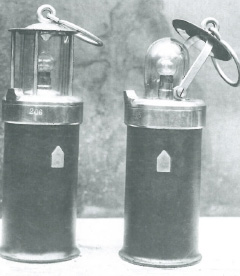Olé, Olé, Olé, Batteries are Great
Application
June 11. 2024
2 min.
A stadium full of people requires an immense amount of electricity, especially for lighting when it's dark. The consequences of a power shortage may be dire, which is why stadium battery back-up systems are some of the most robust of their kind.

Imagine yourself attending a Euro 2024 match, for example. It's evening already, and all of a sudden, the lights go out. The whole Olympiastadion of Berlin, capacity 70+ thousand, plunges into darkness and mass panic breaks out. But maybe the power outage isn't total and its results not as dramatic after all. Nevertheless, if payment and security systems failed, Wi-Fi dropped, or the TV broadcast was disrupted, that would be inconvenient enough. Which is why an uninterruptible power supply is imperative for stadiums.
Large arenas are most often equipped with not just one, but a host of battery-based UPSs, and many also have their own diesel generator. Both individually and together, these systems are designed to keep critical equipment operational until mains power is restored. This includes the stadium's CCTV as well as other security installations, server rooms and communications equipment, fire control, lifts, emergency lighting, or payment and access systems.
They may have very different requirements in terms of power supply, some equipment being in peak use only shortly before and after the match, for example. Such a diverse load mixture thus requires a sophisticated back-up power plan which may include single-phase UPSs ranging from small rackmount units to larger ones sized to supply lighting systems with power demands in the hundreds of kVA. Various electronics including IT equipment requires three-phase UPSs to back them up, which may either serve these systems individually, or be centralized into one larger UPS.
In large stadiums, the battery backup may be sized for 10, but even 30 minutes, and for longer runtimes be supported by a standby generator. Such a generating set is provided with enough fuel to last for several hours, sometimes up to ten or more, in order to cover not just long duration power cuts, but why not also planned power outages. Altogether, the back-up system of a large stadium is as highly sophisticated as it is robust, because if you cram tens of thousands of people into a tightly confined area, nothing must go wrong.
| One of the systems that may not be super critical, but you want to be able to rely on them, is Video Assistant Referee, or VAR. Debuting at the 2018 FIFA World Cup, VARs usually consist of 42 cameras including slow and ultra slow motion cameras supported by various communications and imaging subsystems, and are orchestrated by three replay operators that select the cameras with the best angle. To ensure the continuity of data capture and storage, VAR systems are quite often also UPS protected. If they are not, you may find yourself in a situation similar to what occurred during a Leeds vs Arsenal match in October 2022. The game was halted after just 69 seconds after the referee lost contact with the VAR, while the scoreboard above the playing field went blank, too. It took roughly half an hour to reboot, recalibrate and bring the VAR system back online, while the match was interrupted for a total of 40 minutes. |
Related articles
Tunnels Are Marvels of Engineering. And Not Just Because They Were Drilled Into Rock
November 29. 2023
2 min.
VíceRising to the Clouds, Electricity Must Never Run Out
October 2. 2023
2 min.
Více



